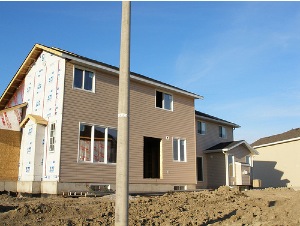 Back to the future?Photo: Julep67The Obama administration’s plan for reviving the banks is predicated on the idea that the “toxic assets” weighing down balance sheets aren’t really all that toxic at all; that the banks, in other words, aren’t actually insolvent, but just the victims of temporary investor panic. If that logic proves true, then we may be in the process of delaying a much-needed reckoning of how we arrange our built landscapes. in short, the Obama administration is placing a massive bet, with public cash, on the resiliency of suburbia — at a point when climate change and hair-trigger oil markets threaten to make suburbia look like a foolish relic.
Back to the future?Photo: Julep67The Obama administration’s plan for reviving the banks is predicated on the idea that the “toxic assets” weighing down balance sheets aren’t really all that toxic at all; that the banks, in other words, aren’t actually insolvent, but just the victims of temporary investor panic. If that logic proves true, then we may be in the process of delaying a much-needed reckoning of how we arrange our built landscapes. in short, the Obama administration is placing a massive bet, with public cash, on the resiliency of suburbia — at a point when climate change and hair-trigger oil markets threaten to make suburbia look like a foolish relic.
Here’s what i mean. The administration is betting an unfathomable amount of public money on the idea that banks have merely gotten a bad rap from investors. Here is how Josph Stiglitz, the Nobel laureate Columbia economist, recently summarized the so-called Geithner plan for the New York Times op-ed page:
Under the plan by Treasury Secretary Timothy Geithner, the government would provide about 92 percent of the money [for large institutional investors like hedge funds] to buy the [“toxic”] asset[s] but would stand to receive only 50 percent of any gains, and would absorb almost all of the losses.
So the government induces well-heeled investors to buy beaten-down assets, with a guarantee of limited losses and the prospect of outsized gains. And if the assets actually bounce back and prove to be worth something after all, then the public purse books a modest gain, the investors make out like bandits, and the banks clean up their balance sheets. Based on this scenario, bond-market strongman Bill Gross declared the plan “win, win, win.”
But what does it mean to win in this case? It’s my understanding that the “toxic assets” mainly involve securities and derivatives based on housing stock — much of it concentrated in highly suburbanized regions in south-central Florida and around southwestern cities like Phoenix and Las Vegas.For everyone to win, those places — which rank high among areas with the nation’s highest foreclosure rates — will have to become “hot” again. People will have to fill up the desolate subdivisions around Fort Mayers, Fl., immortalized in George Packer’s recent New Yorker article “Ponzi State.” They’ll decide that yes, they do want to live in — and are willing to bid up real estate prices in — the fifth suburb out from Las Vegas, or the outer rings around Los Angeles or Houston or Dallas.
If they do, the formerly “toxic” assets will rise in value, the taxpayers will be off the hook, and the banks will have been saved on the cheap (maybe even at a modest profit). But suburbia will have become more entrenched, and so will its economic wellsprings: sprawl, far-flung Big Box stores, cars, highway subsidies, etc. However, if you take climate change and oil scarcity seriously, then this scenario looks shaky — and at best temporary. Cheap oil might last long enough to reignite suburban real estate markets temporarily, but they’ll almost certainly crash again — people won’t be able to afford the gas to work far from home.
So arguably, at a time when the Administration should be devoting resources to creating a low-carbon economy and and dense, energy-efficient housing patterns, it’s placing a large bet on business as usual.
How large a bet? Say the “toxic assets” really are toxic — that developers in places like exurban Florida, greater Las Vegas, etc., really did overbuild housing stock, and are facing years of depressed real estate markets.In that case, the assets that Geithner is now busily shuffling off the banks’ balance sheets and into the hands of private investors could really be worth pennies on the dollar vs. face value. Remember, the public is putting up 92 percent of the money — and facing that much risk as well. Losses could be titanic. And money that could have been spent building out a rail network, building houses within dense city centers, bolstering local and regional food infrastructure — will go down the drain. “Win, win, win” looks a lot like “lose, lose.”



